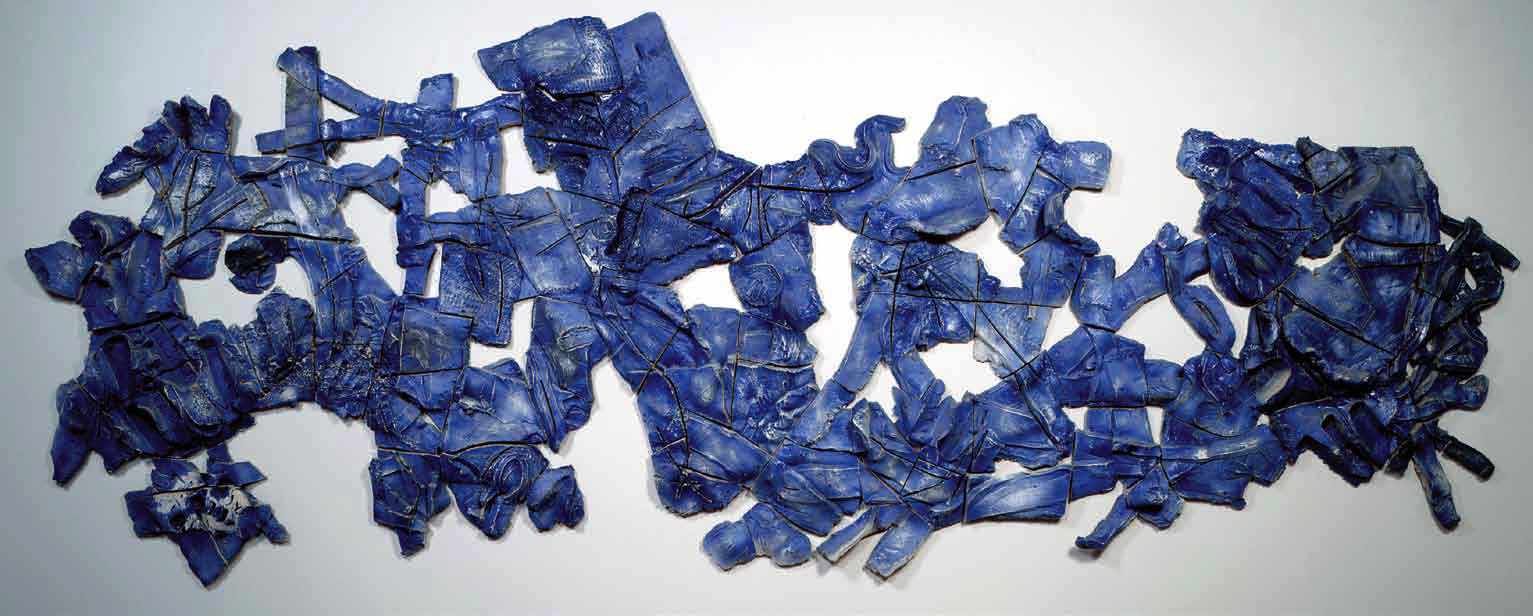
JOHN MASON, Blue Wall, 1959, Ceramic, 84 x 252 x 5 inches, Collection of the artist
Clay's Tectonic Shift: John Mason, Ken Price, and Peter Voulkos, 1956-1968 | This exhibition focuses on three of the most innovative and dynamic artists of the era, whose work forever changed the way ceramics would be regarded. Los Angeles was the site of a "revolution in clay" in which a small group of artists challenged studio pottery's traditional focus on utilitarian ware to create sculptural forms. The exhibition and catalog, Clay's Tectonic Shift, focus on--Mason, Price and Voulkos-- three artists who, in the late 1950s and 1960s, emerged as sculptors, creating new works in clay that claimed equal footing with art in other media. Although each of these sculptors has been featured in solo shows or larger group exhibitions, this project is the first to feature their work together through key pieces that mark their emerging sculptural styles from 1956 to 1968.
Dr. Mary MacNaughton, director of the Williamson Gallery, described the concept behind the exhibition and catalog: "Mason, Price, and Voulkos changed the conversation in ceramics from craft to art, creating fired-clay sculpture that was unprecedented in ambition and originality. The exhibition presents important works in this development. These three artists were the catalysts for a new ceramic scene and a definitive shift in the way ceramics were understood. From that point until the present day, clay has simply never been viewed in the same way again."
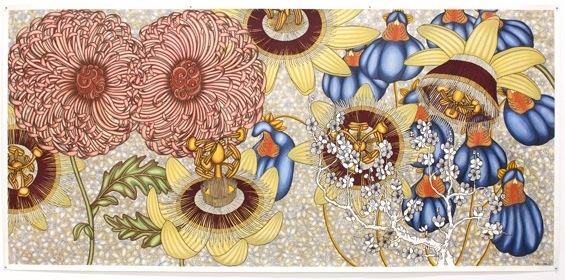
Magical Thinking | An ambitious new exhibition featuring the work of Los Angeles painter Karen Liebowitz, Philadelphia-based Nancy Blum and Los Angeles-based Vanessa Conte. These three artists see magical thinking as an acknowledgment and openness to causal connections without a correspondent need for scientific proof. They share in a belief in the interrelationship of those experiences that go beyond conventional observation. When the ineffable and ephemeral engage with the material and tangible, beauty is revealed to be not a supplement to our experience, but a substantive source of power in its own right.
Nancy Blum (work shown above) offers a series of very intricate new botanical drawings. These works present unabashed beauty at the same time that they subvert the traditional idea of the decorative. The complex and fantastical flowers appear to be the masters of their own universe, seeming to possess authority and freedom. Blum uses line and form in a subtly mathematical way, so the effect is hallucinatory, yet the nuanced patterns point to a sense that each move has an accompaniment or echo.
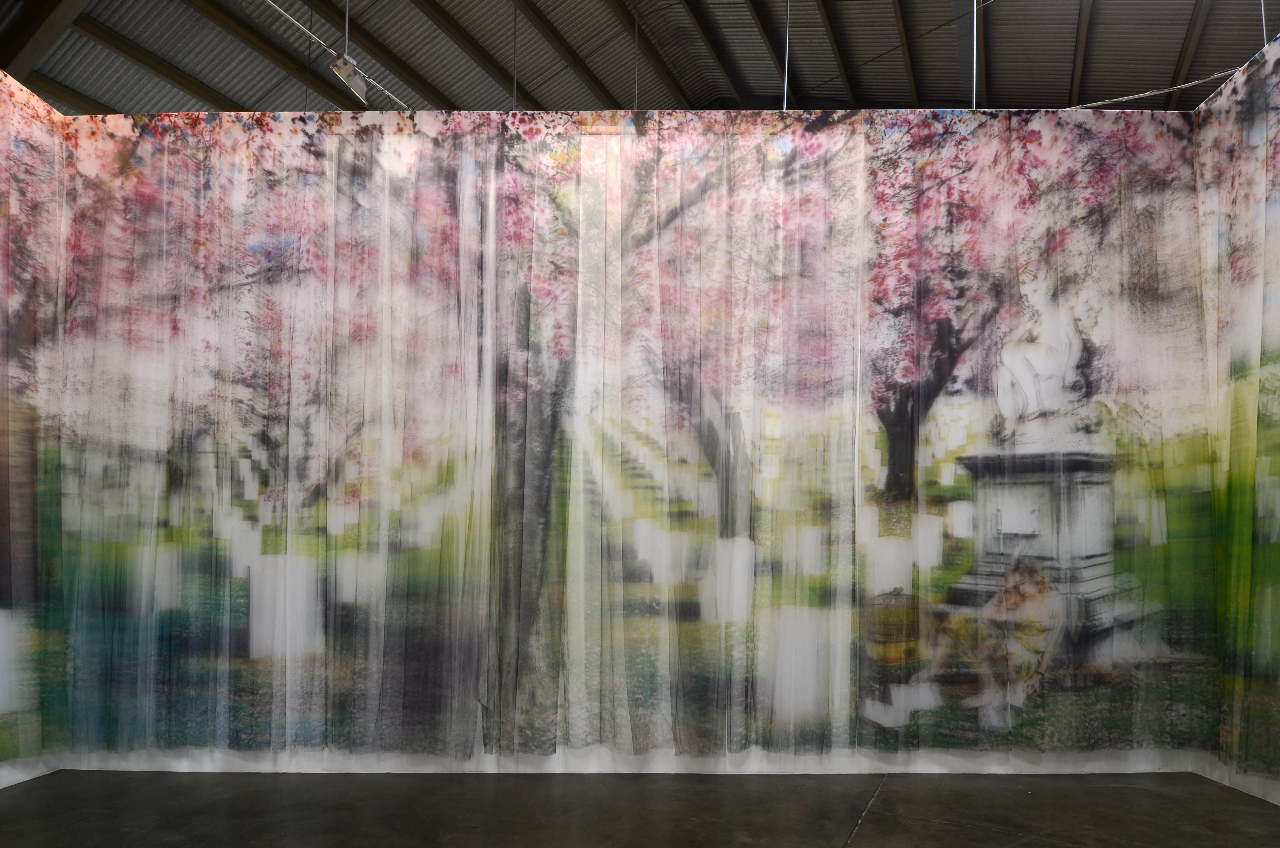
Izhar Patkin: The Dead are here | These dream like paintings, a room wrapped with 14' tall wall size paintings in ink on tulle curtains, tread the boundaries between illusion and reality. They are part of a collaboration, which began in 1999 between Israeli born Patkin and the late revered Kashmiri poet Agha Shahid Ali. The Dead are here is the 13th chapter in Shahid's elegy, "From Another Desert." It tells the Arabic love story of Laila and Majnoon. "Majnoon" whose name means "possessed" or "mad" sacrificed everything for Love.
Patkin's ethereal veils challenge not only the physical conventions of painting, canvas, murals, installation and even video projection - but also the conventions of visual expression itself: abstraction, representation and manifestation. Patkin sees the three as fundamentally rooted in the illusive vocabulary of our religious doctrines: monotheistic, iconic and pagan. From the start of their cross-cultural collaborative journey, Patkin and Ali decided that the Jew and the Muslim would meet on the veil.
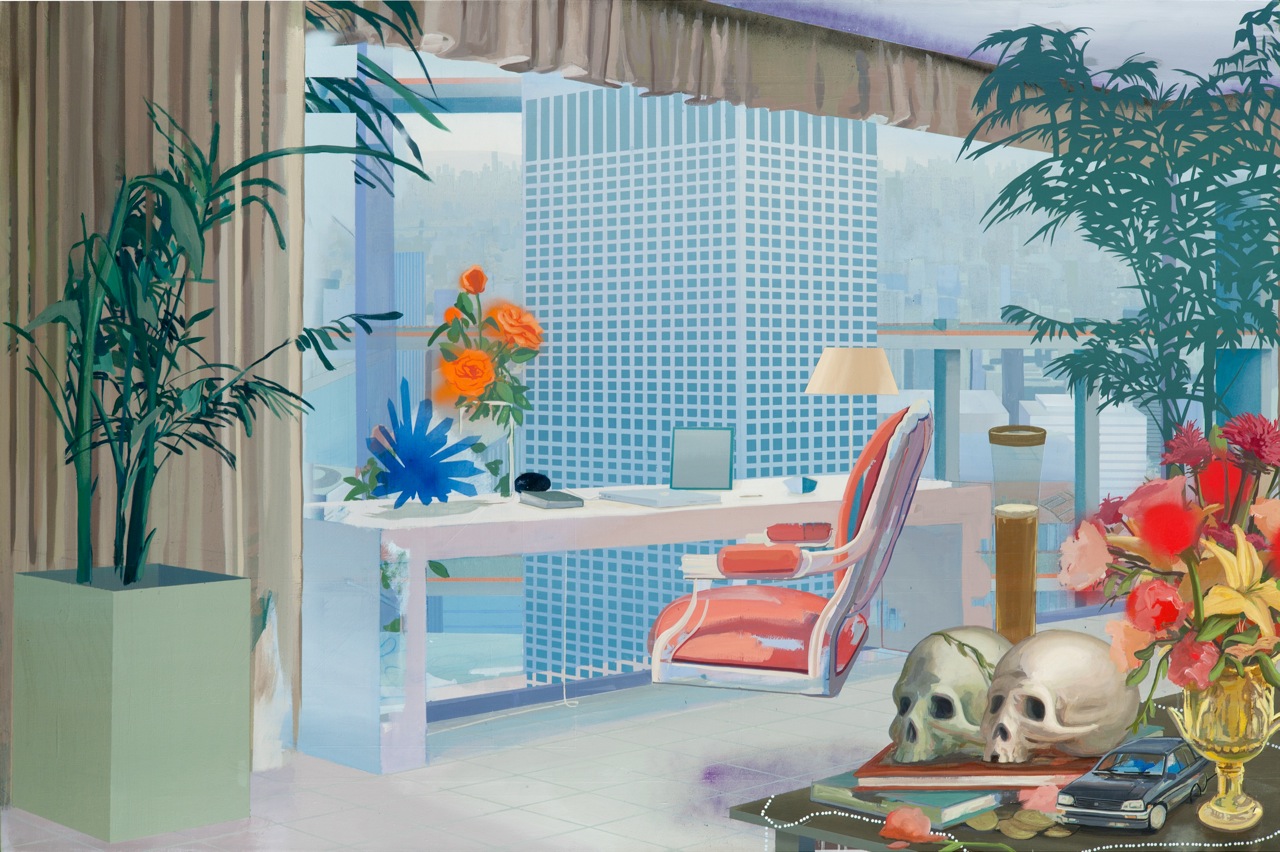
Robert Minervini: On the Nature of Things | The title, On the Nature of Things, references the repetition of the still life motif featured in many of the works in this exhibition, as well as a direct quotation from the ancient Roman poet Lucretius' poem by the same title, "De Rerum Natura". The book of poetry, now more than 2000 years old, is a call to radical ideas, such as that the universe functioned without the aid of gods, that religious fear was damaging to human life and that matter was made up of very small particles in eternal motion, colliding and swerving in new directions.
All of the titles of the paintings for this exhibition are direct quotations from the poem and the literary references are a part of the conceptual underpinning for these multi-faceted works, which, through the juxtaposition of these various references, place the viewer somewhere between the past, present and future. One of these is the Vanitas panting, a type of symbolic work of art meant for humanity to reflect upon the temporariness of life and morality. It is derived from the Latin origin "emptiness", which in turn relates to Lucreatius' interpretation of matter and the void. In a way, the works in On the Nature of things, function as contemporary Vanitas paintings, in which the contemplation of existence is made through a mixed symbolism of the intermingling of historical and contemporary objects.
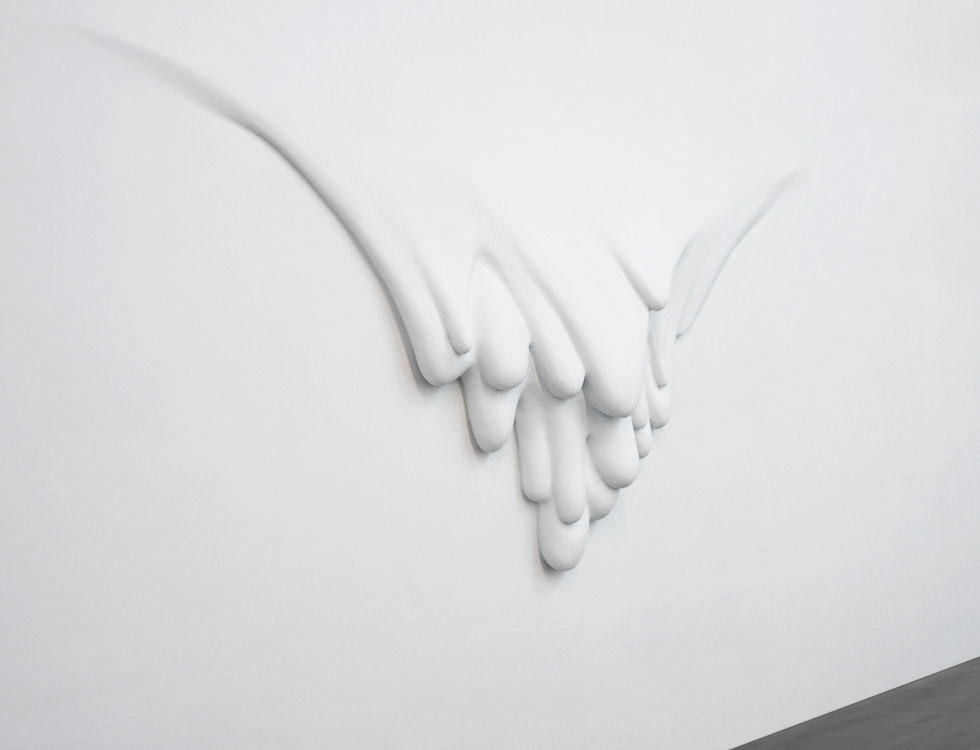
Daniel Arsham: The Fall, The Ball, and The Wall | Arsham illustrates the artist's continued interest in manipulating architecture and in challenging expectations of accepted realities. From two-dimensional work to sculpture, installation, public art, and performance, this New York-based artist produces occasions to (re)consider architecture, the natural world, and the manner in which they interact.
Arsham presents three bodies of work, revealing his diverse artistic practice and the progressive manner in which he approaches his subject matter, chosen media, and the surrounding environment. His structural interventions that cause walls to appear in a state of flux, as if they are melting or dripping, reverse the notion of architectural rigidity and of a partition's standard presentation. With a new series of work on canvas, he depicts realistic building constructions, which include elements that spell out words, such as "oops." A large-scale, hanging mass of tinted spheres, from the set of Merce Cunningham's final performances, is a three-dimensional sculpture based from the pixels of a hyper-magnified photograph of a cloud formation.
For the most comprehensive calendar of art events throughout Los Angeles go to Artweek.LA.